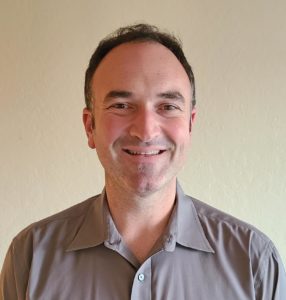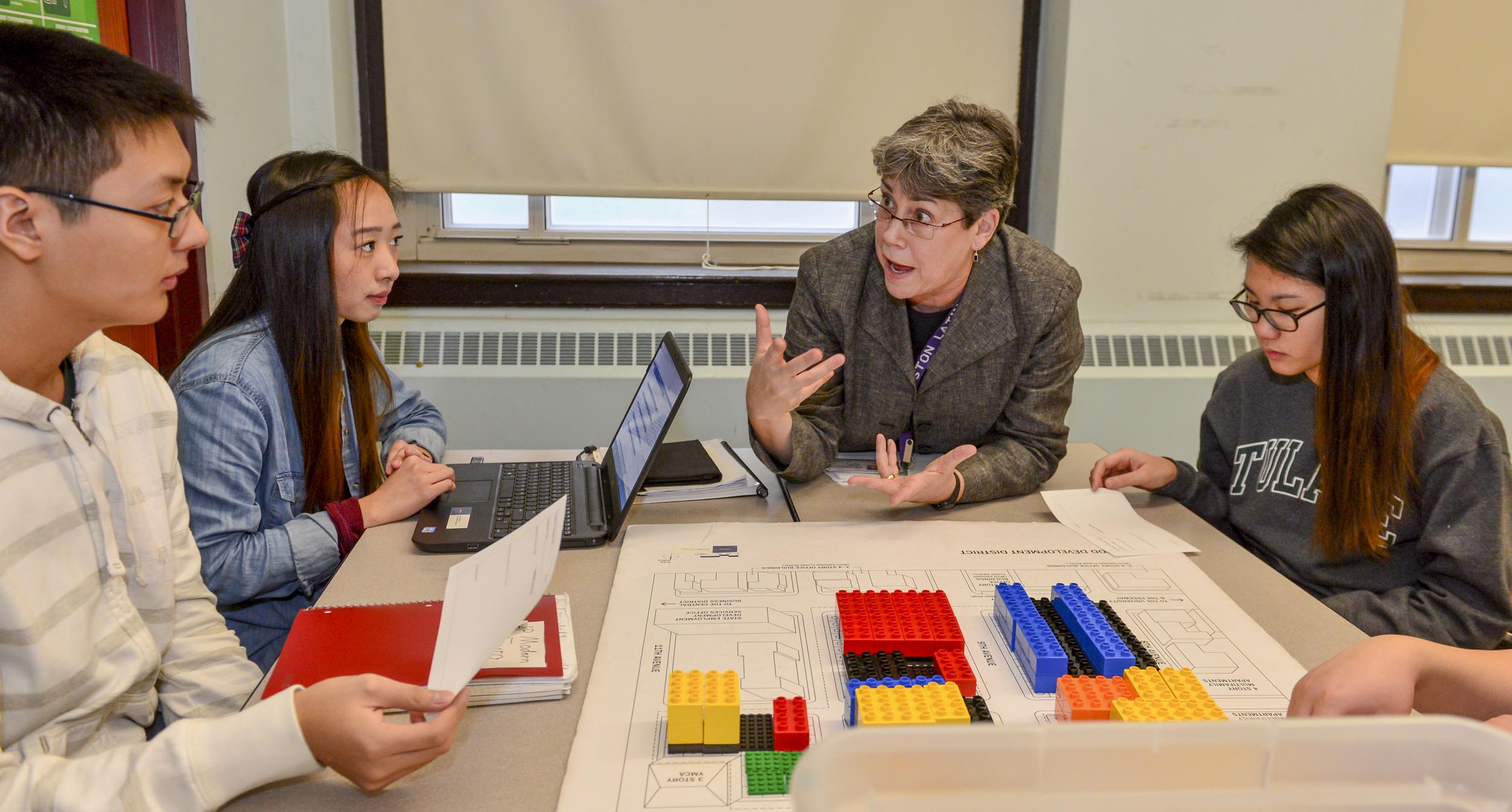
Born and raised in the small northern California town of Fort Bragg, Zachary Dahl, AICP, had a passion and interest in urban planning from a young age. He is currently the Deputy Community Development Director at the City of San Mateo, CA. Dahl has over 20 years of public and private experience in planning. His previous roles include planning and building director with the Town of Los Altos Hills and planning services manager with the City of Los Altos. He holds a bachelor’s degree in city and regional planning from Cal Poly, San Luis Obispo. Dahl was active in APA leadership roles at both the state and national levels and he helped organize the first student planning conference at San Jose State in 2003. Dahl now volunteers to support ULI’s Urban Plan, an educational program for high school students that opens them to concepts and ideas of planning, development, and economics.
What motivated you to pursue a career in planning?
My grandfather was a civil engineer, my great uncle was the visionary architect Charles Moore, and my parents are an artist, contractor, and photographer. All of them fueled my passion for and interest in urban planning. I didn’t actually know about city planning but was very interested in attending Cal Poly San Luis Obispo to study either architecture or engineering. I loved bridges and thought maybe I could be an engineer who would one day design another Golden Gate Bridge!
My grandfather was a strong role model. I loved visiting his office and seeing photos on his wall of the buildings his company had built, including Hartford’s General Hospital. I never got to meet my uncle Charles Moore who passed away when I was 11. But I’d heard so much about him, read his books, and visited his buildings. One of his buildings, Sea Ranch Condominium #1, is still in the family. I love visiting there; you can feel his presence in that building.
I came across urban planning while going through Cal Poly’s course book and fell in love with the profession.
Tell us more about your involvement with APA
At Cal Poly, I joined the Associated Students in Planning (ASP) through the city and regional planning department. Through ASP, I became aware of APA and got involved with the local Central Coast Section. Later, I was nominated as Cal Poly’s Student Representative on the Central Coast Section Board for my final years of college. As a student rep, I attended my first national APA conference in New Orleans in 2001 — an amazing experience. I also connected with the Student Representative Council (SRC) and was nominated as the Region VI Representative. The 2002 conference in Chicago left me disappointed with APA’s effort to involve students. The few student-focused activities felt like APA didn’t really care about supporting students — their future members. Student discounts and registration assistance were minimal, and many fees were the same as for professionals.
After the conference, I raised these issues and concerns with my connections at APA. A number of people in APA’s leadership responded, and I was subsequently appointed to APA’s election reform task force. I believe the task force planted some serious seeds, because it now seems that APA is doing a better job of engaging and supporting students.
What was it like to serve on national’s election reform task force?
I had lobbied to be on the APA’s membership task force, as this was at the core of the issues I raised and cared about, so it felt a little like tokenism to be appointed to the election reform task force. But it was a positive experience. I got to meet with other planners from around the country and work with them to improve APA’s election processes. Still, when you’re a student in a room with seasoned professionals, it’s hard to find your voice. I was just a planning student with probably half-baked ideas. But, along with several other students on the SRC who kind of rattled the cage, I like to think we pushed APA to invest more effort into its student membership.
And you also helped organize the first student planning conference?
After graduation, I moved to Santa Cruz and got plugged in with the Northern Section of APA California. I had a friend at San Jose State (my predecessor on the SRC Council), who was on the Northern Section Board. We were both passionate about planning and politics, and had lots of big ideas about how we were going to effect change. Both of us felt that the APA could do better for students, which resulted in the idea of having a student-focused planning conference.
The conference came about mainly through a group of SJSU students in their urban planning program. My SRC predecessor was one of the leaders, and we collaborated to put together a day-long conference. It included a mobile workshop, speaker panels, and a keynote speaker. All things considered, we students did a pretty good job. I have to give credit to Hing Wong, FAICP, and the Northern Section Board, who provided our group with a grant to cover conference expenses. Students who attended paid only a small admission fee, $5 or so.
You switched from private to public sector. When and why?
I might have stayed in the private sector longer. I was exposed to projects and did things that probably were way above my pay grade and my experience level at the time, but in 2007 I began to worry about where the economy was going. Obviously, I didn’t foresee the crash, but it felt like something bad was going to happen. I was looking at my company’s workload and thinking about our vulnerability if the economy cooled. Our projects depended on development, and a drop in project volume would put me at risk. I had wanted to gain some experience in the public sector, which I saw as stable; so I made the switch.
I feel every professional should spend time on both sides of the counter, experiencing the planning profession through different lenses. As a professional, you benefit when you’re able to think about something through both of those lenses.
What planning challenges are you are coming across in San Mateo?
The biggest challenges are in housing and the way the regulatory landscape is shifting. It’s a shift we won’t fully see until the dust settles (if it ever does). Local jurisdictions have to implement within the framework of all the State legislative requirements that are coming out. It’s kind of like the legislature is saying, here you go, figure it out, we don’t have all the details, but don’t get it wrong or you could be exposed to a legal challenge from the State, a developer, or an advocacy group.
Tell us more about ULI “UrbanPlan” and your involvement
It is an engaging educational program for juniors and seniors in high school, plugged into the economics or government curriculum. Students, grouped into development teams, are tasked with responding to an RFP from a city to redevelop a large parcel of land in an urban context. The students use large Legos to develop a 3D mixed-use development and strategically place parks, commercial, office, and residential uses. The exercise touches on many things we do as planners, like dealing with neighborhood opposition, financial constraints, and jobs/housing targets.

There are two facilitations where volunteers coach the student teams and help them think comprehensively about the RFP and build the model. Then my colleagues and I volunteer as a faux city council where the student teams present their proposed development, and we select the group that put together the best proposal. At the end, we provide all of the groups with feedback, and the students get to ask questions about the work we do. It’s a really fun and rewarding experience.
How do you balance work and life?
It’s always a challenge to keep up with the demands of work without letting it take over. My non-work time is focused on my family as my wife and I raise our two sons, ages seven and four. That is so rewarding and fulfilling, and as they grow up, I get to enjoy more activities with them. Just the other week, I took them to their first Giants game. When I do have spare time, I enjoy the outdoors, gardening, hiking, carpentry, golf, and traveling.
Any advice for budding planners?
Don’t try to climb the career ladder too quickly. There’s a lot of value to spending time at each rung, and it will hurt a lot more going down than climbing up. If you climb too fast, you may get in over your head, setting yourself up to fail.
Also, build your professional network, and never be afraid to reach out to someone. Fostering connections is important, and your network will help you build and broaden your outlook. If there’s a planner who intrigues you, reach out and say, hey, can we get coffee and talk about the work you are doing?

Interviewer Dhawal Kataria, AICP, is a transportation planner at Kittelson & Associates and a guest writer for Northern News. All interviews are edited.

